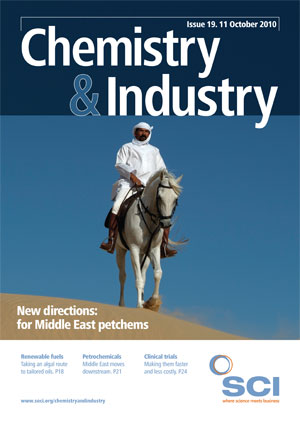With less than 10% of clinical drug trials completed on schedule, there is plenty of scope for companies to improve efficiency and save costs, write Paul Naybour and Rodger Joby.
In 2003, a paper in the US Journal of Health Economics reported a figure of $802m as the estimated cost of bringing a new drug to market.1 This figure was based on the research and development of 68 drugs launched by 11 pharmaceutical companies. More up to date estimates suggest that these costs have risen to as much as $1.7bn.2

Delays and overspends
The process of organising and managing clinical trials is often limited because the people who have experience implementing studies are often not closely involved in the initial development phase. As a result, many assumptions about the best way to implement the protocol are made with either no or insufficient input from the contract research organisation (CRO) that is going to complete the study. The assumptions made at this stage may not reflect the most practical approaches to recruiting patients, selecting centres and so forth, which can profoundly impact the timeline and costs later.
During the procurement process, CROs rarely have longer than two weeks to tender for the work and the contracts are usually fixed price. Very little time exists to do any proper feasibility study into the proposed protocol and the CRO is in sales mode so is unlikely to be honest about a poor quality approach. The CRO is protected from the weakness in the protocol by clearly defined assumptions, which pass the risk back to the sponsor.

Furthermore, the design may not allow for new innovations in techniques, which could have saved time and increased patient recruitment and retention. This can occur, for example, if the protocol does not reflect the typical medical practice in the selected country; when there are delays in contract negotiations with investigational sites; or when there is over-optimistic recruitment due to insufficient risk analysis.
Consequently, many studies fail because they set unrealistic timelines, or don’t do adequate feasibility studies or complete formal start up activities early enough. As a result many trials run late and the cost overruns become significant. For a £10m study, an overspend of 10% is not unusual.
A more collaborative but challenging approach to the design and procurement of clinical trials, with more focus on the feasibility phase, could result in significant savings in time and money by addressing the root causes early in the process.
Many sectors facing the same challenge of how to get the best value out of the supply chain have moved towards a value management approach.4 For this approach an integrated feasibility team – from both the sponsor and preferred supplier(s) – focuses on value, not cost, by implementing a number of simple steps.
Firstly, it is important to understand and challenge the relative importance of the sponsor’s objectives. This helps define realistic criteria for the project’s success and prevents the adoption of arbitrary timescales. Value management ensures that everyone understands the relative importance of the project objectives, together with the project constraints and risk from an early stage.
Secondly, identifying alternative courses of action, including different techniques, approaches and methods, may be more cost effective. Early input from CRO project managers and clinical research associates (CRAs) into the design of the protocol can significantly improve the selection of investigative sites, diagnostic techniques and data collection processes.
Finally, analysis and evaluation of different approaches against defined criteria allows project managers to select the best option. This practical and collaborative input to feasibility reduces the chance of delays and additional costs introduced by amendments of the protocol once the study has started.
Joint leadership and commitment from the top, with a collaborative approach to project management by sponsors and suppliers, can eliminate the need to duplicate project managers. Rewards for the CRO against a balanced scorecard can measure the overall success of the study financially, in terms of quality, for the staff and the customers, not just the cost. Ideally, CRO and pharma staff incentives would be linked to the successful completion of the project within the agreed objectives.
Much has been done to use technology to improve the flow of information within study teams; however, an integrated approach and system has the potential to further improve communications between the sponsor and the CRO. Flexible workforces with strong team working between all partners can help the team to appreciate the challenges faced by either party.
Bridging the gap
The process for value management is well defined and includes clear steps to be completed at each stage of the project where a number of workshops are conducted. The primary objective of value management at concept stage is clarifying why the need exists, to ensure that the project objectives have been thoroughly analysed and understood. This workshop should be conducted early in the development of the protocol with input from the CRO that will be bidding for the contract to complete the study.
The next step is to evaluate the project options and select the one that offers best value for money. Project managers must review the validity of the objectives; agree modifications and evaluate the feasibility of options; develop the preferred (best value) option; and determine if this can be improved or enhanced. They must also agree on recommendations about the preferred option and produce a programme for development and action plan.
Value management during the feasibility stage provides a structured approach to ensure that the most cost-effective means of implementing the project are identified. It ascertains elements of the study design and specification that add no value to the project or which could be provided through another method. It could be completed between the submission of proposals for the study and the award of contract.
Value reviews need to be undertaken to determine if the functionality could be altered and be more cost effective so the project may be delivered within the original budget. Ideally, a value review must be undertaken at least once during start up and implementation phases to identify more effective ways of working. More frequent reviews may be necessary due to the complexity of the project.
Value management is a tried and trusted way to reduce the overall cost of projects and has a successful track record in many sectors. It brings together the complete project team to understand the challenges and identify smarter, quicker and more cost effective ways of completing the project, often by simple changes to the approach and requirements. The clinical research and development sector could learn much from these more collaborative and value focused approaches.
Paul Naybour and Rodger Joby are business development director and associate consultant at project management training organisation Parallel Project Training based in Reading, UK.
References
1. H. G. DiMasi, Journal of Health Economics, 2003, 22, 151.
2. R. Collier, Canadian Medical Association Journal, 2009, 180(3), 279.
3. CenterWatch, ‘US Sites Rate Medpace, Kendle and ICON at TOP CROs in 2009’. The CenterWatch Monthly, June 2009.
4. Office of Government Commerce. Achieving excellence in construction, 2007. Retrieved from Office of Government Commerce: http://www.ogc.gov.uk/ documents/CP0064AEGuide4.pdf





